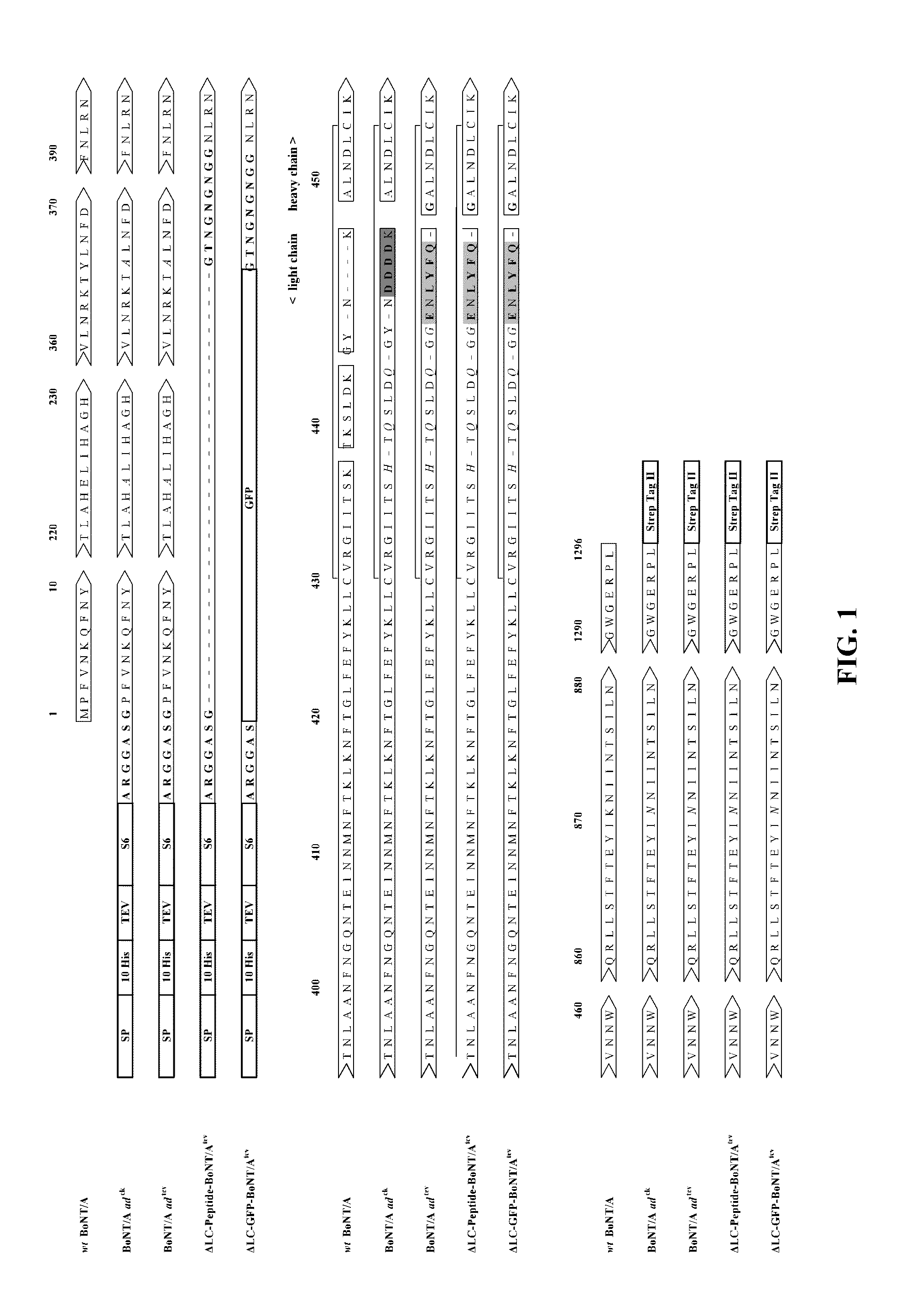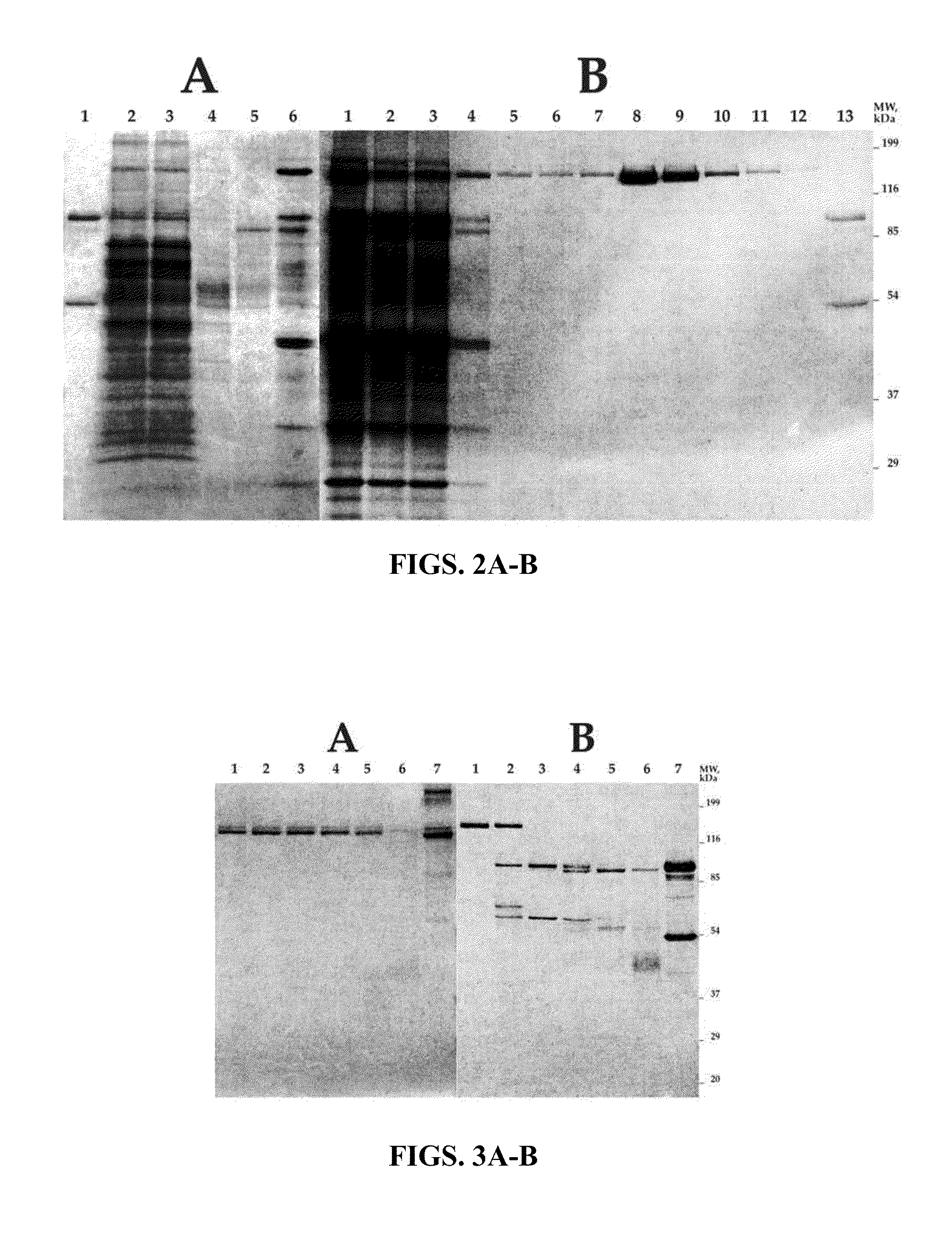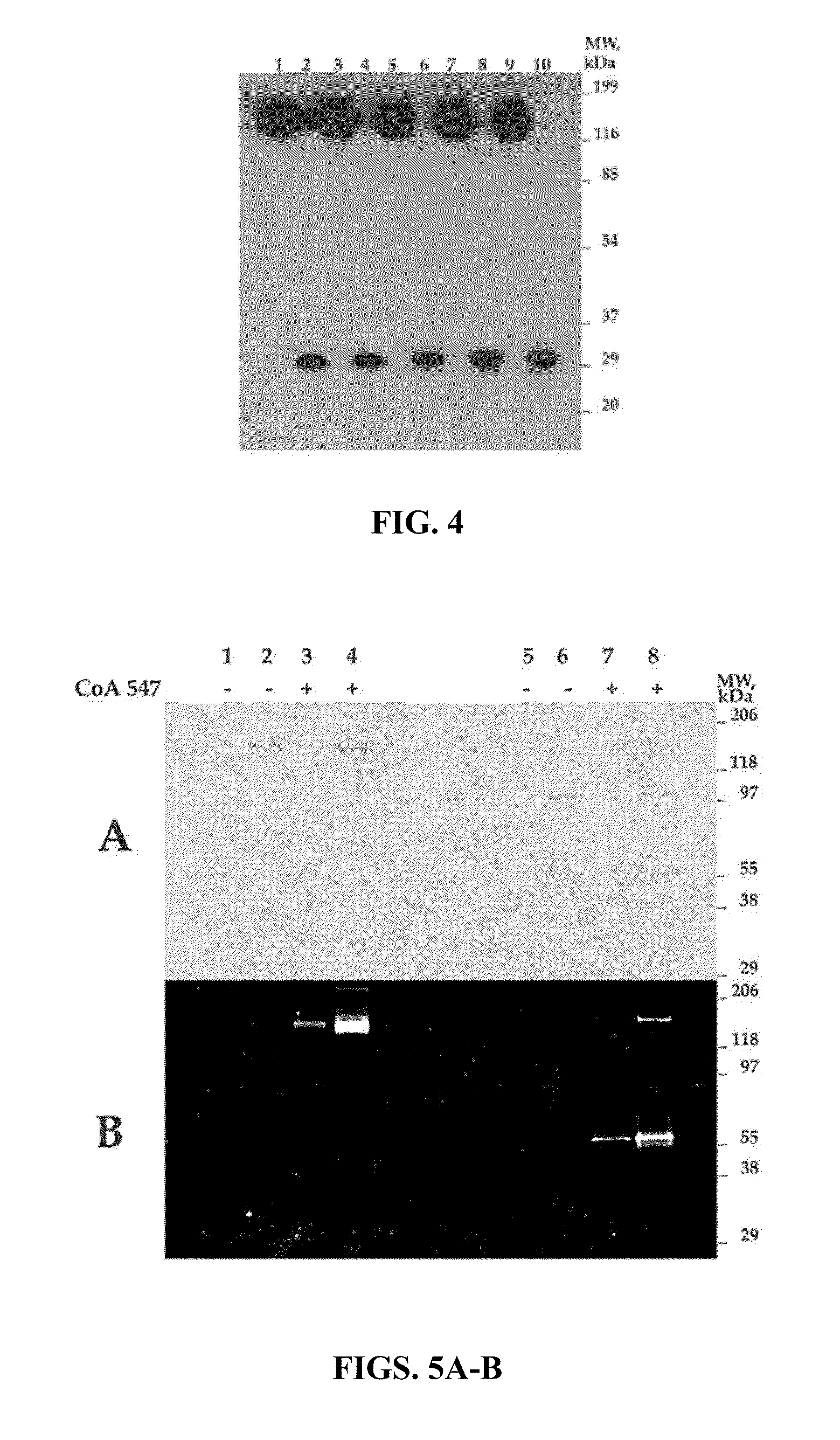Recombinant derivatives of botulinum neurotoxins engineered for trafficking studies and neuronal delivery
a technology of botulinum neurotoxins and which is applied in the direction of depsipeptides, peptide/protein ingredients, fusion polypeptides, etc., can solve the problems of reducing the ability of reconstituted bont holotoxin derivatives to transport lc into the neuronal cytosol, unable to renaturate the protein and reconstitute, and no information on the physiological trafficking
- Summary
- Abstract
- Description
- Claims
- Application Information
AI Technical Summary
Benefits of technology
Problems solved by technology
Method used
Image
Examples
example 1
Creation of the Construct Encoding BoNT / Aadek in pLitmus Vector
[0132]Modification of pLitmus28i by Replacement of the Existent Polylinker with a Custom-Built Polylinker
[0133]A vector with a custom polylinker derived from Litmus 28i (New England Biolabs, Cat. #N3528S, 2823 b.p.) was used for subcloning the full-length BoNT / Aadek. This derivative of Litmus 28i (pLitmus28C1) was created by restriction digestion of Litmus 28i with Bgl II and Aat II followed by dephosphorylation. Annealed phosphorylated oligonucleotides C1-1S and C1-1A (Table 1) were ligated into digested Litmus 28i, resulting in the intermediate vector, pLitmus28C1INT (2842 b.p.). Vector pLitmus28C1INT was digested with Kas I and Stu I and dephosphorylated. Annealed phosphorylated oligonucleotides C1-2S and C1-2A were ligated into digested pLitmus28C1INT, resulting in the vector pLitmus28C1 (2890 b.p.). The sequence of this vector was deposited in GenBank under accession number GQ855199, and has a sequence of SEQ ID NO:...
example 2
Creation of Vectors for Protein Expression in E. coli
[0138]pET-19b-Based Construct
[0139]Vector pLitSB3A was linearized by digestion with Hind III and Mlu I and dephosporylated. The 6799 b.p. DNA fragment was isolated from an agarose gel and purified. Synthetic phosphorylated oligonucleotides CP4S and CP4A were annealed and ligated into the isolated vector DNA to generate the vector pLitB3A1 (6844 b.p.). Vector pLitB3A1 was digested with Nco I and Xho I and the 4078 b.p. DNA fragment was isolated and purified from an agarose gel. This fragment was ligated into expression vector pET-19b (Novagen, Cat. #69677, 5717 b.p.), that had been digested with Nco I and Xho I and dephosphorylated, generating the 9721 b.p. vector pET19B3A.
[0140]pETcoco2-Based Construct
[0141]Vector pLitSB3A was linearized by digestion with Hind III and Mlu I and dephosphorylated. The 6799 b.p. DNA fragment was isolated from an agarose gel and purified. Synthetic phosphorylated oligonucleotides CPSS and CPSA were a...
example 3
Creation of Vectors for Protein Expression in Baculovirus
[0142]Construct for Expression of BoNT / Aadek
[0143]The plasmid pLitSB3A was digested with the restriction endonucleases Rsr II and Xho I. The 4190 b.p. DNA fragment, encoding full-length BoNT / Aadek, was isolated from an agarose gel, purified, and ligated into the baculovirus transposition vector, pFastBac1™ (Invitrogen, Cat. #10360-014, 4776 b.p.) (which had been digested with Rsr II and XhoI and dephosphorylated) to generate the 8968 b.p. vector pFB1SB3AEK. The DNA sequence of pFB1SB3AEK with annotations has been deposited to GenBank under accession number GQ855201 (SEQ ID NO:15). Features of the 1372 aa protein, translated from the open reading frame of the insert DNA (BoNT / Aadek), are shown in FIG. 1.
[0144]Construct for Expression of BoNT / Aadtev
[0145]In this construct, DNA encoding the enterokinase cleavage site positioned between LC and HC was replaced with a sequence encoding a second TEV cleavage site. The 348 b.p. frag...
PUM
| Property | Measurement | Unit |
|---|---|---|
| concentration | aaaaa | aaaaa |
| MW | aaaaa | aaaaa |
| concentration | aaaaa | aaaaa |
Abstract
Description
Claims
Application Information
 Login to View More
Login to View More - R&D
- Intellectual Property
- Life Sciences
- Materials
- Tech Scout
- Unparalleled Data Quality
- Higher Quality Content
- 60% Fewer Hallucinations
Browse by: Latest US Patents, China's latest patents, Technical Efficacy Thesaurus, Application Domain, Technology Topic, Popular Technical Reports.
© 2025 PatSnap. All rights reserved.Legal|Privacy policy|Modern Slavery Act Transparency Statement|Sitemap|About US| Contact US: help@patsnap.com



